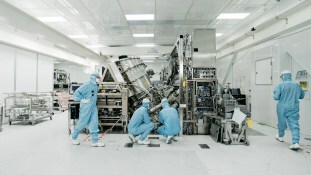What do you think?
Rate this book


464 pages, Hardcover
First published October 4, 2022

No other facet of the economy is so dependent on so few firms. Chips from Taiwan provide 37 percent of the world's new computing power each year. Two Korean companies produce 44 percent of the world's memory chips. The Dutch company AML builds 100 percent of the world's extreme ultraviolet lithography machines, without which cutting-edge chips are simply impossible to make. OPEC's 40 percent share of world oil production looks unimpressive by comparison. The global network of companies that annually produces a trillion chips at nanometer scale is a triumph of efficiency. It's also a staggering vulnerability. The disruptions of the pandemic provide just a glimpse of what a single well-placed earthquake could do to the global economy. (p.xxv)The above quote references the seismic instability of the region. The proximity of China seems even more ominous. The book devotes significant attention to China's use of its significant funds and large potential customer market to leverage business deals that will result in locating the most advance technology in their own country.
Semiconductors recast the economies and politics of America's friends in the region. Cities that had been breeding grounds for political radicalism were transformed by diligent assembly line workers, happy to trade unemployment or subsistence farming for better paying jobs in factories. By the early 1980s, the electronics industry accounted for 7 percent of Singapore's GNP and a quarter of its manufacturing jobs. Of electronics production, 60 percent was semiconductor devices, and much of the rest was goods that couldn't work without semiconductors. In Hong Kong, electronic manufacturing created more jobs than any industry except textiles.
In Washington and in the chip industry, almost everyone had drunk their own kool-aid about globalisation. Newspapers and academics alike reported that globalisation was in fact 'global', that technological diffusion was unstoppable, that other countries' advancing technological capabilities were in the US interest, and that even if they weren't, nothing could halt technological progress. [...] However, 'globalisation' of chip fabrication hadn't occurred; 'Taiwanisation' had. Technology hadn't diffused. It was monopolised by a handful of irreplaceable companies.
However, the messages coming from the chip industry weren't any more coherent than the contradictory leaks from the Trump White House. Publicly, semiconductor CEOs and their lobbyists urged the new administration to work with China and encourage it to comply with trade agreements. Privately, they admitted this strategy was hopeless and feared that state-supported Chinese competitors would grab market share at their expense. The entire chip industry depended on sales to China - be it chipmakers like Intel, fabless designers like Qualcomm, or equipment manufacturers like Applied Materials. One US semiconductor executive wryly summed things up to a White House official: "Our fundamental problem is that our number one customer is our number one competitor".